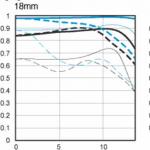How to take creative photos with a crystal prism for special effects. Straight prism scan How to make a paper prism
This image is a "regular" street photo. Overpasses lead the eye to the image ... through a prism
A key element of any photography is how you use light. In this article, you will learn how to split it. The use of a prism in photography provides new opportunities and is another way to use the refraction of light.
What does a prism do to light?
Because the prism is a glass object, light refracts as it passes through it, creating several effects that you can use in photography.
There are two ways to use a prism.
- Rainbow projection - a prism, and in particular its triangular shape, acts by dividing the light and revealing waves of various lengths in the form of a rainbow. And you can take a picture of it.
- Light Redirection - Light can change direction abruptly when passing through a prism. This means that when you look through it, you will be able to see the painting at a 90 degree angle to yourself. This factor makes it possible to create a double exposure.

The picture clearly shows the rainbow light from the prism, as well as the remnants of light emitted at different angles.
Using a Crystal Prism to Create a Rainbow
A great way to use a prism is to create a rainbow. The larger the prism, the larger the resulting rainbow. Another way to increase its size is to increase the distance between the prism and the surface you are projecting the rainbow onto. The difference between these options is that as the aforementioned distance increases, the rainbow light becomes more diffuse and less intense.

Using a prism, you can create your own rainbow
Notice also how high the sun is in the sky. The angle at which sunlight strikes the prism affects the angle of the projected rainbow. It is easier to project a rainbow onto the ground at noon. To project a rainbow more horizontally, you need to photograph when the sun is lower in the sky, i.e. after sunrise or before sunset.
rainbow as photo detail
Rainbow light is very colorful and when projected onto a surface it can create an interesting effect. Look for a surface that has a neutral color (such as gray or white). Pay attention to surfaces with a pleasant texture.
Spin the prism until you can see the rainbow projected onto the surface you are photographing. You can, of course, take a picture by holding the prism and the camera. But it's good if you have a friend to help. Since this is a detailed photo, it is better to use a macro lens, but you can find equally interesting compositions using other lenses.
rainbow in portrait photography
Undoubtedly, one of the most popular forms of prism photography is projecting a rainbow onto the model's face. The rainbow won't end up being big, and it would be nice, again, to have another person hold the prism while you take the picture.
Three images in one frame
You can shoot through the glass those objects that appear inside the prism. Raise the prism and rotate it. You will see images inside. However, they will not be the same as those directly in front of you. Depending on how you rotate the glass prism, one or two images will be visible. These are the ones you can work with to create a one-click shutter.
Lens selection
For prism photography - wide angle and macro lenses.
- The wide-angle lens allows you to add a background image to your photo. However, the edge of the prism becomes more visible in the frame. It's not easy to blur an image with the aperture available on most wide-angle lenses.
- macro lens Most prism photography is done with it, as this lens allows you to focus close to the prism and avoid trapping your hand in the frame. The transition from the background to the prism image is also harder to detect.

The image was taken with a macro lens with a prism, and in the end it looks like an optical illusion.
Aperture for prism photography
Which one you use for these photos depends mostly on what you plan to do with the background and how sharp you want the image to be in the prism.
An open aperture of f/2.8 or more will certainly work to blur the background. Most photographs to achieve the feeling of multiple exposure. This means that an aperture of around f/8 is the right balance between background and detail, and avoids the prism line being too harsh when transitioning to the background.
background image
Due to the small width of the prism, even with a macro lens, the background takes up most of the frame. So what works as a backdrop for this type of photo?
- Leading lines - the background that draws attention to the images inside the prism - is used effectively. It could be a tunnel or a road leading to infinity.
- The texture background is more of a blank canvas for images in a prism. It can be a brick wall or leaves and flowers.
- Symmetry. Since the prism splits your image down the middle, using symmetry on both sides of that split is a pretty effective strategy.

Using background symmetry can work well in prism photography.
Image in glass
Now the hard part is getting a good image inside the prism. The images in it may be at 90 degrees to where you are looking, or perhaps at 60 degrees to the edge and in front of where the photographer is standing. Incorporating this into background composition is a tricky aspect of prism photography.
- Composition - You already have a good composition for your background. Now we need to save it while adding a point of interest that would look good through a prism. Just use trial and error. Change the angle of the prism or rotate it; You can also try stepping back and forth.
- Adding a model. An easier way to add interest to an image in a prism is to take it as a portrait photo. The advantage is that you can simply ask the model to stand in the desired position from which the refracted light passes through the prism.

Adding a model to the composition of this image made the sakura photo much more interesting.
Use fractals
Fractals are another element that uses refraction in photography. They produce prismatic effects, but are not triangular in themselves. You can shoot through them without worrying about the images being at a 90 degree angle to you. Fractals are often used to create creative soft-edged portrait photos or other abstract shots.
Time to go and share the light!
If you want to try something new in photography, you will definitely love . It's a bit difficult to photograph with her, but that's what makes the process really interesting. Right now it's time to take a crystal prism in your hands and go towards experiments!
In the school curriculum for the course of solid geometry, the study of three-dimensional figures usually begins with a simple geometric body - a prism polyhedron. The role of its bases is performed by 2 equal polygons lying in parallel planes. A special case is a regular quadrangular prism. Its bases are 2 identical regular quadrangles, to which the sides are perpendicular, having the shape of parallelograms (or rectangles if the prism is not inclined).
What does a prism look like
A regular quadrangular prism is a hexahedron, at the bases of which there are 2 squares, and the side faces are represented by rectangles. Another name for this geometric figure is a straight parallelepiped.
The figure, which depicts a quadrangular prism, is shown below.
You can also see in the picture the most important elements that make up a geometric body. They are commonly referred to as:
Sometimes in problems in geometry you can find the concept of a section. The definition will sound like this: a section is all points of a volumetric body that belong to the cutting plane. The section is perpendicular (crosses the edges of the figure at an angle of 90 degrees). For a rectangular prism, a diagonal section is also considered (the maximum number of sections that can be built is 2), passing through 2 edges and the diagonals of the base.

If the section is drawn in such a way that the cutting plane is not parallel to either the bases or the side faces, the result is a truncated prism.
Various ratios and formulas are used to find the reduced prismatic elements. Some of them are known from the course of planimetry (for example, to find the area of the base of a prism, it is enough to recall the formula for the area of a square).
Surface area and volume
To determine the volume of a prism using the formula, you need to know the area of \u200b\u200bits base and height:
V = Sprim h
Since the base of a regular tetrahedral prism is a square with side a, You can write the formula in a more detailed form:
V = a² h
If we are talking about a cube - a regular prism with equal length, width and height, the volume is calculated as follows:
To understand how to find the lateral surface area of a prism, you need to imagine its sweep.

It can be seen from the drawing that the side surface is made up of 4 equal rectangles. Its area is calculated as the product of the perimeter of the base and the height of the figure:
Sside = Pos h
Since the perimeter of a square is P = 4a, the formula takes the form:
Sside = 4a h
For cube:
Sside = 4a²
To calculate the total surface area of a prism, add 2 base areas to the side area:
Sfull = Sside + 2Sbase
As applied to a quadrangular regular prism, the formula has the form:
Sfull = 4a h + 2a²
For the surface area of a cube:
Sfull = 6a²
Knowing the volume or surface area, you can calculate the individual elements of a geometric body.
Finding prism elements
Often there are problems in which the volume is given or the value of the lateral surface area is known, where it is necessary to determine the length of the side of the base or the height. In such cases, formulas can be derived:
- base side length: a = Sside / 4h = √(V / h);
- height or side rib length: h = Sside / 4a = V / a²;
- base area: Sprim = V / h;
- side face area: Side gr = Sside / 4.
 To determine how much area a diagonal section has, you need to know the length of the diagonal and the height of the figure. For a square d = a√2. Therefore:
To determine how much area a diagonal section has, you need to know the length of the diagonal and the height of the figure. For a square d = a√2. Therefore:
Sdiag = ah√2
To calculate the diagonal of the prism, the formula is used:
dprize = √(2a² + h²)
To understand how to apply the above ratios, you can practice and solve a few simple tasks.
Examples of problems with solutions
Here are some of the tasks that appear in the state final exams in mathematics.

Exercise 1.
Sand is poured into a box shaped like a regular quadrangular prism. The height of its level is 10 cm. What will the level of sand be if you move it into a container of the same shape, but with a base length 2 times longer?
It should be argued as follows. The amount of sand in the first and second containers did not change, i.e., its volume in them is the same. You can define the length of the base as a. In this case, for the first box, the volume of the substance will be:
V₁ = ha² = 10a²
For the second box, the length of the base is 2a, but the height of the sand level is unknown:
V₂ = h(2a)² = 4ha²
Because the V₁ = V₂, the expressions can be equated:
10a² = 4ha²
After reducing both sides of the equation by a², we get:
As a result, the new sand level will be h = 10 / 4 = 2.5 cm.

Task 2.
ABCDA₁B₁C₁D₁ is a regular prism. It is known that BD = AB₁ = 6√2. Find the total surface area of the body.
To make it easier to understand which elements are known, you can draw a figure.
Since we are talking about a regular prism, we can conclude that the base is a square with a diagonal of 6√2. The diagonal of the side face has the same value, therefore, the side face also has the shape of a square equal to the base. It turns out that all three dimensions - length, width and height - are equal. We can conclude that ABCDA₁B₁C₁D₁ is a cube.
The length of any edge is determined through the known diagonal:
a = d / √2 = 6√2 / √2 = 6
The total surface area is found by the formula for the cube:
Sfull = 6a² = 6 6² = 216

Task 3.
The room is being renovated. It is known that its floor has the shape of a square with an area of 9 m². The height of the room is 2.5 m. What is the lowest cost of wallpapering a room if 1 m² costs 50 rubles?
Since the floor and ceiling are squares, that is, regular quadrilaterals, and its walls are perpendicular to horizontal surfaces, we can conclude that it is a regular prism. It is necessary to determine the area of its lateral surface.
The length of the room is a = √9 = 3 m.
The square will be covered with wallpaper Sside = 4 3 2.5 = 30 m².
The lowest cost of wallpaper for this room will be 50 30 = 1500 rubles.
Thus, to solve problems for a rectangular prism, it is enough to be able to calculate the area and perimeter of a square and a rectangle, as well as to know the formulas for finding the volume and surface area.
How to find the area of a cube


A prism is a geometric body, a polyhedron, the bases of which are equal polygons, and the side faces are parallelograms. To the uninitiated, this may sound a bit intimidating. And, when your child needs to bring a prism made at home to a geometry lesson, you are at a loss, not knowing how to help your beloved child. In fact, everything is not so difficult and, using our tips on how to make a prism, you will adequately cope with this problem.
How to make a paper prism
We will immediately agree that we will do a straight prism, that is, a prism in which the side edges will be perpendicular to the bases. Making an inclined prism out of paper is very problematic (such layouts are usually made of wire).
We already know that two identical polygons lie at the bases of a prism. Therefore, our work will begin with them. The simplest of the polygons is the triangle. This means that we will first make a triangular prism.
How to make a triangular prism
We will need thick white paper for drawing, a pencil, a protractor, compasses, a ruler, scissors and glue.
We draw a triangle, any one is possible, but to make our prism especially beautiful, we will make the triangle equilateral. Such a prism in geometry is called "correct". We choose at our discretion the size of the side of the triangle, let's say 10 cm. With a ruler we put this segment on paper and with a protractor we measure an angle of 60 ∗ from one end of our segment.
We draw an inclined line. On it, using a ruler, set aside 10 cm from the end of the segment. Thus, we have found the third vertex of the triangle. We connect this point with the ends of the initial segment and the equilateral triangle is ready. It can be cut out. Similarly, we make the second triangle, or carefully trace the contours of the first on paper. Well, we already have two reasons.
We make the side edges. We decide what the height of the prism will be. Let's say 20 cm. We draw a rectangle in which the value of one side is the height of the prism (in our case, 20 cm), and the second side is equal to the value of the side of the base multiplied by the number of these sides (we have: 10 cm x 3 = 30 cm) .
On the long sides we make marks every 10 cm. We connect the opposite marks with straight lines. On them then it will be necessary to carefully bend the paper. These are the side edges of our prism. We outline narrow allowances for gluing along two long and one short sides of the rectangle (1 cm wide strips are enough). We cut out the rectangle along with the allowances, carefully bend them according to the markup. We bend the ribs.
We start assembly. We glue the rectangle along the side face into a tube of triangular section. Glue base triangles on top and bottom on the bent allowances. The prism is ready.
It is probably not worth going into the details of the question of how to make a prism out of cardboard. The entire assembly algorithm remains the same, only replace the paper with thin cardboard. By changing the number of sides of the base polygons, you can now independently make both a five- and a hexagonal prism.
A prism is a three-dimensional figure, a polyhedron, of which there are a lot of types: positive and irregular, straight and inclined. According to the figure lying at the base, the prism is from triangular to polygonal. It’s easier for everyone to make a straight prism, but over an inclined one you need to work a little harder.
You will need
- - compass;
- - ruler;
- - pencil;
- - scissors;
- - glue;
- - paper or cardboard
Instruction
1. Draw the bases of the prism, in this case it will be 2 hexagons. In order to draw a true hexagon, use a compass. Draw a circle with it, and with the help of the same radius, divide the circle into six parts (for a true hexagon, the sides are equal to the radius of the circumscribed circle). The resulting figure resembles a cell of a honeycomb. Draw an incorrect hexagon arbitrarily, but with the help of a ruler.
2. Now start designing the "pattern". The walls of the prism are parallelograms, and you need to draw them. In the direct model, the parallelogram will be a light rectangle. And its width will be invariably equal to the side of the hexagon lying at the base of the prism. With the right figure at the base, all the faces of the prism will be equal to each other. If it is incorrect, only one parallelogram (one side face), suitable in size, will correspond to the entire side of the hexagon. At the same time, follow the sequence of the dimensions of the faces.
3. On a horizontal line, stepwise set aside 6 segments equal to the side of the base of the hexagon. From the points obtained, draw perpendicular lines of the required height. Connect the ends of the perpendiculars with the 2nd horizontal line. You have 6 rectangles merged together.
4. Attach to the bottom and top side of one of the rectangles 2 hexagons constructed earlier. To any base if it is positive, and to the corresponding length if the hexagon is incorrect. Outline the silhouette with a solid line, and the fold lines inside the shape with a dotted line. You have a flattened surface of a straight prism.
5. To create an inclined prism, leave the bases the same. Draw a side-parallelogram, which will be one of the faces. There should be six such faces, as you remember. In order to now draw a scan of an inclined prism, it is necessary to arrange six parallelograms in the following order: three in ascending order, so that their oblique sides form one line, then three in descending order with the same condition. The steepness of the resulting line is directly proportional to the degree of inclination of the prism.
6. To the five rectangles in the development, add small trapezoidal overlaps on the short sides to glue the figure, as well as on one free long side. Cut out the blank for the prism together with the overlaps and glue the model.
A prism is a device that separates typical light into separate colors: scarlet, orange, yellow, green, blue, indigo, violet. It is a translucent object, with a flat surface that refracts light waves depending on their length and, as a result, allows you to see light in different colors. Do prism easily enough on your own.

You will need
- Two sheets of paper
- Foil
- Cup
- Compact disc
- Coffee table
- Torch
- Pin
Instruction
1. A prism can be made from a simple glass. Fill the glass with water a little more than half way. Place the glass on the edge of the coffee table so that about half of the bottom of the glass is hanging in the air. At the same time, make sure that the glass is stable on the table.
2. Lay two sheets of paper one by one next to the coffee table. Turn on the flashlight and shine the rays of light through the glass so that it falls on the paper.
3. Adjust the location of the lantern and paper until you see a rainbow on the sheets - this is how your beam of light is decomposed into spectra.
Related videos
The basic skill of an artist in academic drawing is the knowledge to depict the simplest three-dimensional geometric shapes on a plane - a cube, prism, cylinder, cone, pyramid and sphere. Possessing this skill, it is possible to build more difficult, combined three-dimensional forms of architectural and other objects. A prism is a polyhedron whose two faces (bases) have an identical shape and are parallel to each other. The side faces of the prism are parallelograms. According to the number of side faces, prisms can be 3-, tetrahedral, etc.

You will need
- - paper for drawing;
- - primitive pencils;
- - easel;
- - a prism or an object that has the shape of a prism (a wooden block, a box, a box, a part of a children's designer, etc.), preferably white.
Instruction
1. Erect prism is allowed by inscribing it either in a parallelepiped or in a cylinder. The core difficulty in drawing a prism is the positive construction of the shape of 2 faces of its base. When drawing a prism lying on one of the side faces, there is an additional difficulty in observing the laws of perspective, from the fact that in such an arrangement the perspective reduction of the side faces becomes noticeable.
2. Start drawing a vertically located prism by marking its central axis - a vertical line drawn in the middle of the sheet. On the axis line, mark the center of the upper (visible) face of the base and draw a horizontal line through this point. Determine the ratio of the height and width of the prism using the sighting method: look at nature, covering one eye, and holding a pencil in an outstretched hand on the eye tier, mark with your finger on the pencil the width of the prism visible from your point of view and mentally put this distance along the prism height line a certain number times (how many times).
3. Measuring the segments with a pencil more closely in the figure, mark the width and height of the prism with dots on the 2 lines drawn earlier, observing the ratio obtained. Draw an ellipse around the center of the top face. Be diligent in accurately conveying its imaginary form, looking at nature. Draw approximately the same ellipse (but less flattened) in the plane of the bottom face of the base of the prism. Combine the resulting ellipses with two vertical lines.
4. Now on the upper ellipse it is necessary to notice the segments of the intersection of the side faces and its bases. Looking at nature, mark the points - the vertices of the polygon - lying at the base of the prism, as you see them, and gradually combine them with each other. From these points, draw lines down to the intersection with the lower ellipse. Combine the resulting intersection points as well. During the subsequent drawing, the faces that are visible from the selected point of view are erased or shaded, therefore, draw all auxiliary construction lines without pressure.
5. Lying on my side prism draw with the help of an auxiliary box. Focusing on nature, draw a parallelepiped, observing the theses of perspective - the lines of the lateral edges, when they are mentally continued to the horizon line, which is invariably on the tier of the viewer's eyes, converge at one point. Consequently, the (noticeable) edge far from us will be slightly smaller than the front. When determining the aspect ratio of the parallelepiped, use the "arm's length" (or sighting) method.
6. On the front and back square faces, sweep the vertices of the polygons that lie at the base of the prism and build them. Combine these points in pairs on 2 faces - draw the side edges of the prism. Remove unwanted lines. Highlight the lines of ribs and corners of the prism closest to you more boldly, and mark the distant ones with light lines.
7. Looking at nature, determine the angle of incidence of light, the clearest, most shaded edges, and with the help of shading of varying intensity, convey these light ratios in the drawing. Draw a shadow falling from the subject. Underline the line of contact between the prism and the table with the darkest line. Please note that the light reflected from the surface of the table (reflex) falls on the most shaded face of the prism from below, and slightly illuminates it. When imposing hatching on this face, take this result into account and apply a less saturated tone in the place of the reflex.
Related videos
A prism is a polyhedron formed by any final number of faces, two of which - the bases - must necessarily be parallel. Any straight line drawn perpendicular to the bases contains a segment connecting them, called the height of the prism. If all side faces are adjacent to both bases at an angle of 90 °, the prism is called straight .

You will need
- Prism drawing, pencil, ruler.
Instruction
1. AT straight prism every lateral edge is, by definition, perpendicular to the base. And the distance between the parallel planes of the side faces is identical at every point, including those points where the side edge adjoins them. From these two circumstances it follows that the length of an edge of any lateral face straight prism is equal to the height of this three-dimensional figure. So, if you have a drawing that shows such a polyhedron, it already has segments (edges of the side faces), all of which can also be designated as the height of the prism. If this is not prohibited by the conditions of the task, primitively designate any side edge as a height, and the problem will be solved.
2. If you want to draw in the drawing a height that does not coincide with the side ribs, draw a segment parallel to any of these ribs connecting the bases. It is not invariably possible to do this “by eye”, therefore, build two auxiliary diagonals on the side faces - combine a pair of any corners on the top and a pair corresponding to them on the bottom base. After that, measure any comfortable distance on the upper diagonal and put a point - this will be the intersection of the height with the upper base. On the lower diagonal, measure the same distance correctly and put the second point - the intersection of the height with the lower base. Unite these points with a segment, and building a height straight prism is completed.
3. The prism can be drawn taking into account perspective, that is, the lengths of identical edges of the figure can have different lengths in the figure, the side faces can adjoin the bases at different and not strictly right angles, etc. In this case, in order to correctly observe the proportions, proceed in the same way as described in the previous step, but put the points on the upper and lower diagonals correctly in their midpoints.
In detail - how to fold a sheet of paper and cut out a beautiful snowflake.

You will need
- A sheet of paper, I have an ordinary A4 sheet, it’s better to take huge napkins
- Scissors
Instruction
1. Fold the sheet in half

2. Now doubled, just to find the middle

3. We wrap the edges of the paper folded in half, alternately - as seen in the photo

4. We make sure that the leaf is bent evenly, and the ends reach the folds.

5. Now we fold the resulting envelope in half. It is necessary to practice in order to ensure that the outer edge of the sheet reaches exactly to the fold.

6. While there is no skill, it’s cooler to draw an approximate silhouette of a snowflake in advance.

7. Carefully cut out the silhouette.

8. We diligently expand.

Note!
Remember that it is impossible to make a through cut, the snowflake will fall apart.
Useful advice
The thinner the paper, the easier it is to cut the snowflake. It is allowed to make snowflakes from foil.
Note!
In the development of an inclined prism, do not draw its faces at too large an angle, on the contrary, the model will be unstable.
At the heart of a geometric body - a prism - are polygons, and each side face is a parallelogram. The uninitiated may have been a little scared. But if your child is asked to come to class with a prism, you will naturally want to help him and explain how to make a paper prism.
Let's start by making a straight prism. In this prism, the side edges are perpendicular to the bases. The easiest to make with your own hands is a paper prism with three faces, since its bases are the simplest of polygons - triangles. Let's make a "correct" prism. Its bases are represented by equilateral triangles.
triangular prismLet's think about the height of our triangular paper prism. Let's draw a rectangle with one side equal to the height, and the other equal to the length of the perimeter of the triangle at the base. The resulting rectangle is divided by parallel lines into three equal parts. From the corners of the rectangle located in the middle, we draw circles with a compass with a radius equal to the side of our triangle at the base. Where the circles intersect outside the original rectangle, put points and connect them to the centers of the circles. We should get the figure shown in the middle of the picture. Next, we cut out the figure with small allowances for gluing, bend along the existing straight lines and get the finished prism.
According to what template a paper prism with four faces is made, the diagram in the figure clearly demonstrates.
 Hexagonal prism
Hexagonal prism
An example of a blank for a five-sided prism is shown in the figure.  Here the height of the pyramid is 10 cm, the length of the sides of the pentahedron at the base is 3 cm. Similarly, a hexagonal paper prism can be made, but at its base lies a hexagon.
Here the height of the pyramid is 10 cm, the length of the sides of the pentahedron at the base is 3 cm. Similarly, a hexagonal paper prism can be made, but at its base lies a hexagon.
An inclined paper prism is shown in this figure.  Its side faces are at an angle to the base. Such a prism can be made according to a scanning template.
Its side faces are at an angle to the base. Such a prism can be made according to a scanning template.





